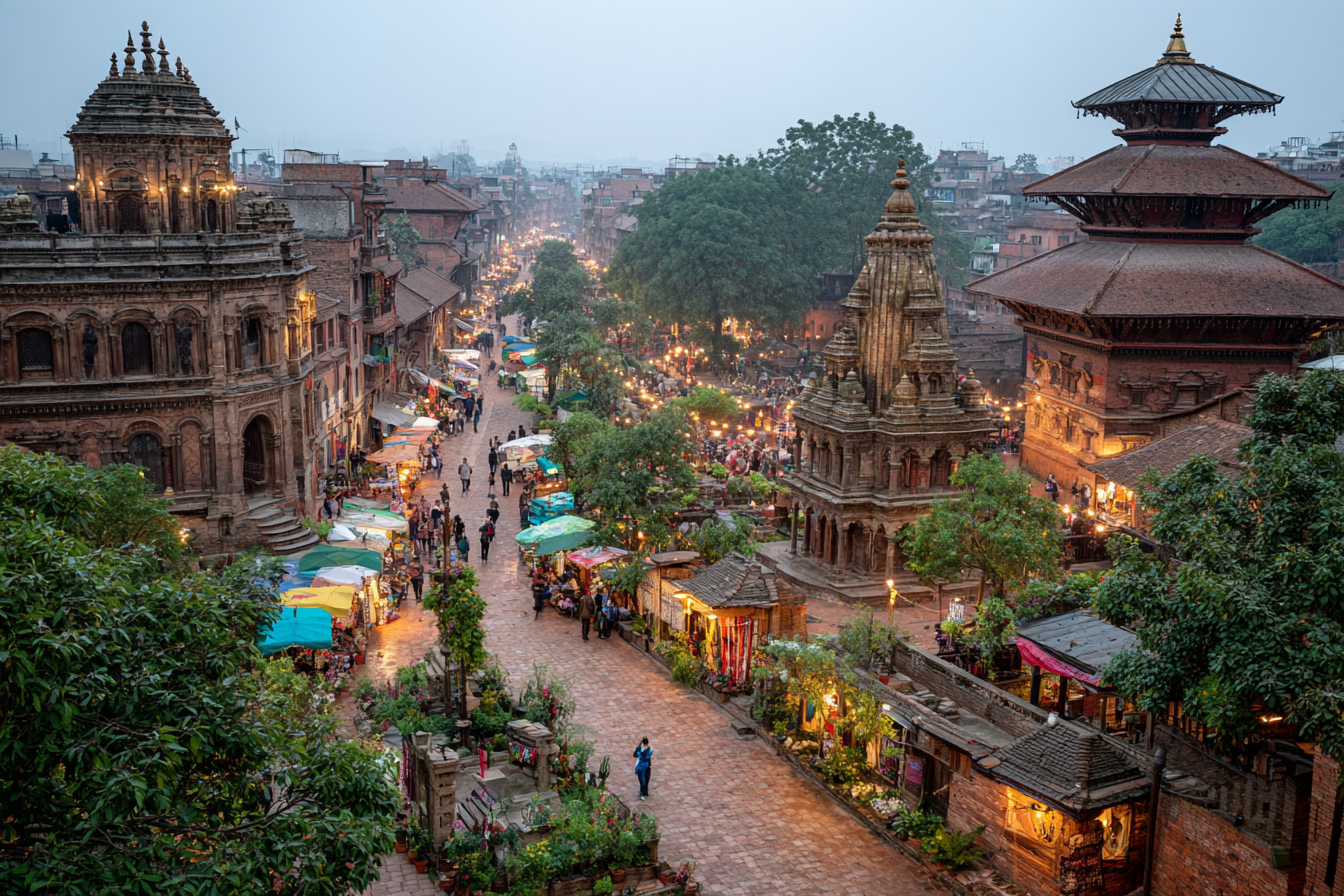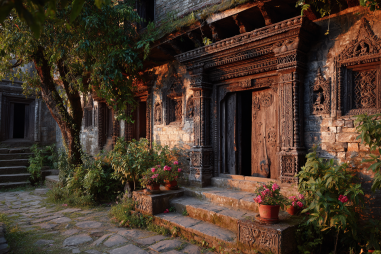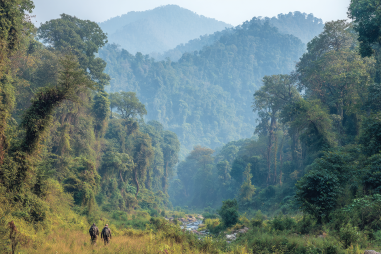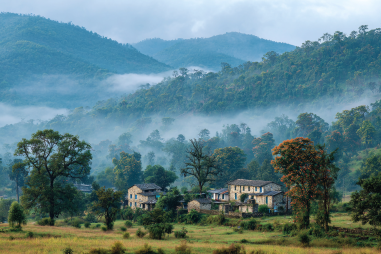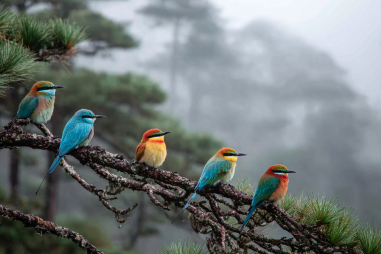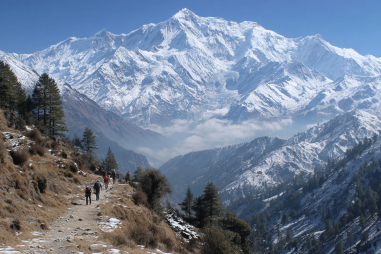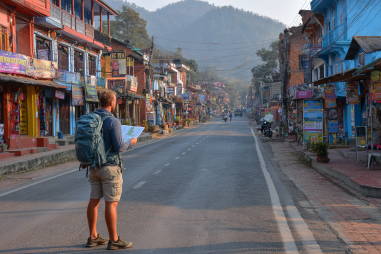Nestled in the Kathmandu Valley, Patan, also known as Lalitpur, is a city that pulses with history, artistry, and tradition. As one of Nepal’s oldest cities, Patan offers travelers a captivating glimpse into the country’s rich cultural past through its stunning architecture, vibrant festivals, and warm, welcoming locals. Whether you’re a history buff, a foodie, or a shopper looking for authentic handicrafts, Patan has something to offer for everyone. This comprehensive travel guide will walk you through the best times to visit, key attractions, cultural highlights, local food, shopping, accommodation, and essential travel tips to ensure your experience in Patan is memorable and enjoyable.
When Is the Best Time to Visit Patan?
Timing your visit can greatly enhance your experience of Patan. The best time to explore this historic city is during the spring (March to May) and autumn (September to November) months. During these seasons, the weather is pleasant with clear skies, making it ideal for sightseeing and outdoor activities. Spring is especially beautiful when the rhododendrons bloom, painting the city in vibrant colors. Autumn coincides with many local festivals, providing an opportunity to witness traditional celebrations up close.
The winter months can be chilly, especially in the evenings, but since Patan is situated at a relatively low altitude, the cold is usually manageable for most travelers. The monsoon season (June to August) brings heavy rainfall and can make sightseeing less comfortable, as some areas become muddy or slippery, so it is generally advisable to avoid visiting during this time if you prefer dry weather.
Exploring Patan Durbar Square
At the heart of Patan lies Patan Durbar Square, a UNESCO World Heritage Site that embodies the city’s artistic and cultural essence. The square is an architectural marvel, showcasing Newar style palaces, courtyards, and intricately carved wooden windows and doors that date back over 1,500 years. As you walk through the square, be prepared to be awed by the dazzling array of temples, statues, and shrines dedicated to Hindu and Buddhist deities.
Some highlights within Patan Durbar Square include the Hiranya Varna Mahavihar (Golden Temple), a stunning 12th-century Buddhist monastery known for its golden façade, and the Taleju Temple, a majestic structure dedicated to Goddess Taleju. The Krishna Mandir is another must-see, built entirely of stone, it stands as a masterpiece of Shikhara-style architecture. Don’t forget to take your time to appreciate the many smaller shrines and the vibrant atmosphere created by local artisans and monks.
Immersing Yourself in Local Culture and Traditions
Patan is a living museum of Newar culture, one of the oldest and most artistically rich communities in Nepal. The people of Patan maintain their traditions with pride, evident in their festivals, art, and daily life. If possible, plan your visit around local festivals like Indra Jatra, Rato Machhindranath Jatra, or the Bhoto Jatra to experience the city’s vibrant street celebrations, traditional music, and dance.
Craftspeople specializing in pottery, metalwork, and paubha painting (traditional Buddhist scroll paintings) are prevalent in Patan, offering fascinating insights into ancient artistic methods. Engaging with these artisans can be a rewarding experience, giving you a deeper appreciation of the skills passed down through generations.
Key Attractions and Must-See Temples
Beyond Patan Durbar Square, the city is home to numerous temples and museums that are definitely worth a visit:
- Mahonna Temple: Known for its beautiful pagoda-style architecture, this temple is dedicated to Maheshwor, an aspect of Lord Shiva.
- Buddha Peace Stupa: Located on the southern hill of Patan, it offers panoramic views of the city and a peaceful atmosphere ideal for meditation.
- National Museum of Nepal: Situated near Patan Durbar Square, the museum houses an impressive collection of historical artifacts, weaponry, and traditional costumes.
- Siddhi Lakshmi Temple: A sacred temple dedicated to Goddess Siddhi Lakshmi, known for its intricate woodwork and spiritual significance.
Each of these sites offers a unique perspective on the religious harmony, art, and history that characterizes Patan.
Food and Dining Recommendations in Patan
Food lovers will find Patan an absolute delight. The city boasts a rich culinary scene that blends traditional Newari flavors with contemporary Nepali cuisine. Sampling local dishes is an essential part of the Patan experience.
Some must-try dishes include:
- Yomari: A sweet delicacy made from rice flour dough filled with molasses and sesame seeds.
- Chatamari: Often called ‘Nepali pizza’, this rice crepe topped with meat or vegetables is a street food favorite.
- Kwati: A hearty mixed bean soup traditionally eaten during festivals.
For dining, consider visiting traditional Newari restaurants such as Dhukuti or Cafe Swotha to savor authentic dishes in a cozy atmosphere. There are also numerous cafes and modern eateries offering international cuisine if you want a change of pace.
Shopping and Local Crafts
Patan is a fantastic place for shoppers looking for handmade, unique souvenirs. The city’s artisans produce exquisite metalwork, wood carvings, pottery, and traditional paubha paintings. Established craft shops and markets surround the Durbar Square, making it convenient to browse and buy authentic items.
Look for:
- Handcrafted jewelry made from silver and brass
- Wooden masks and statues featuring Hindu and Buddhist motifs
- Paubha scroll paintings that depict religious scenes in vibrant colors
- Traditional musical instruments
If you want a personalized shopping experience, many workshops allow visitors to watch artisans at work and even try their hand at crafting.
Where to Stay: Accommodation Options in Patan
Patan offers a range of accommodation to suit different budgets and preferences. From heritage guesthouses set in traditional architecture to modern hotels with contemporary amenities, you’ll find plenty of comfortable options within walking distance of the city’s main attractions.
For a cultural immersion, consider staying in a heritage homestay that offers insight into Newari lifestyle and warm hospitality. Mid-range travelers can find boutique hotels and guesthouses with modern comforts and easy access to dining and shopping areas. For those seeking more luxury, a number of hotels provide upscale services, including spas and rooftop views of the city.
Helpful Tips for Travelers Visiting Patan
To make your trip to Patan smooth and enjoyable, keep these tips in mind:
- Dress respectfully: When visiting temples and religious sites, dress modestly to show respect.
- Carry cash: Many smaller shops and eateries do not accept cards, so it’s wise to have some Nepalese rupees on hand.
- Hire a local guide: A knowledgeable guide can enrich your experience with historical stories and hidden gems not found in guidebooks.
- Stay hydrated and protect yourself from the sun: The altitude and dry climate can be dehydrating, so drink plenty of water and wear sunscreen.
- Be mindful of photography: Always ask permission before photographing locals or inside temples.
- Respect local customs: Observe how locals behave, especially during festivals, and be courteous in your interactions.
With its blend of history, culture, and artistry, Patan invites travelers to step back in time and experience the soul of Nepal. Whether wandering its ancient squares, tasting unique Newari cuisine, or simply soaking up the lively atmosphere, the city’s charm will linger long after you leave. Embrace the warmth of its people, the beauty of its crafts, and the richness of its traditions to make your visit truly unforgettable.

